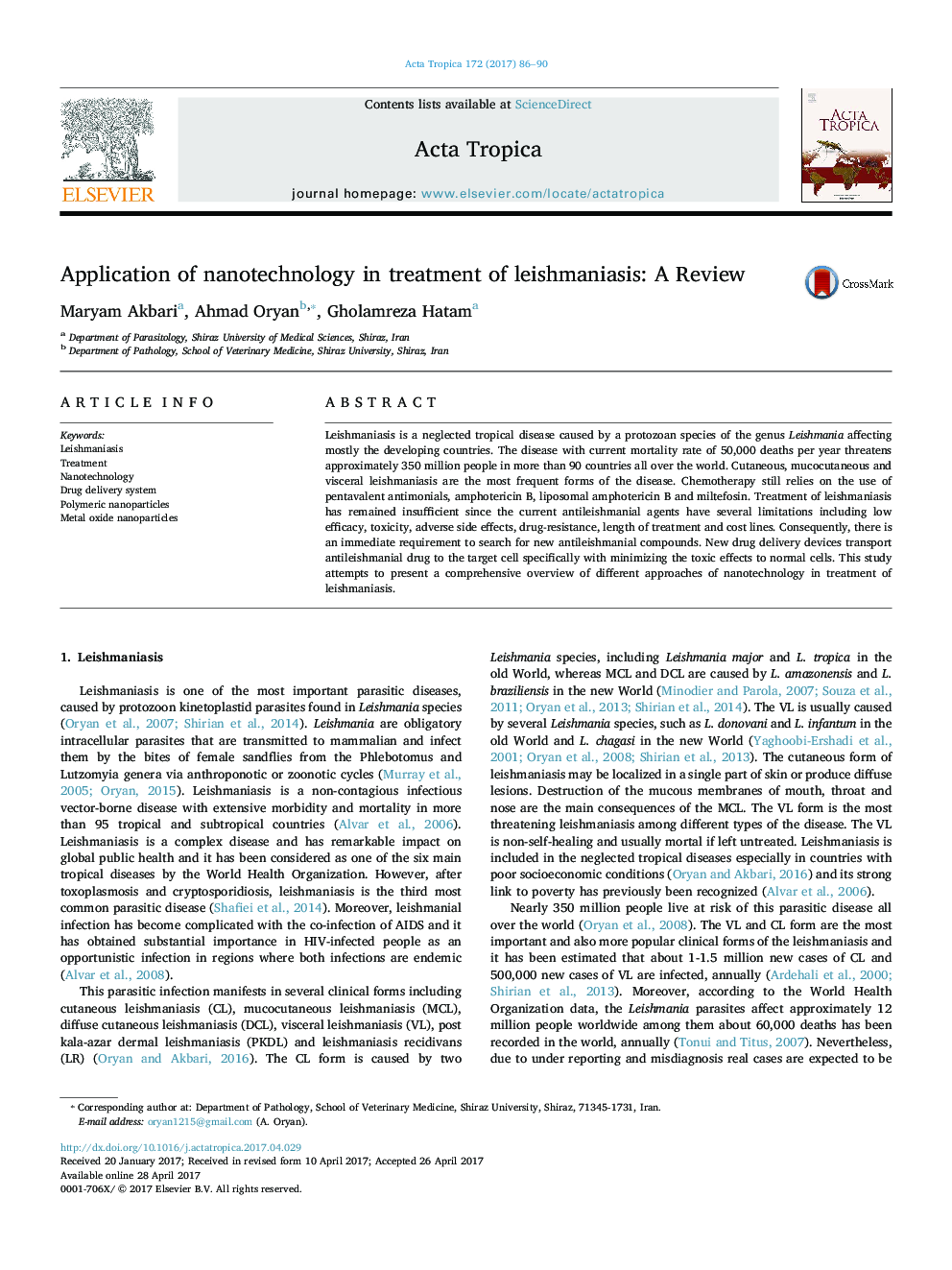| Article ID | Journal | Published Year | Pages | File Type |
|---|---|---|---|---|
| 5671106 | Acta Tropica | 2017 | 5 Pages |
Leishmaniasis is a neglected tropical disease caused by a protozoan species of the genus Leishmania affecting mostly the developing countries. The disease with current mortality rate of 50,000 deaths per year threatens approximately 350 million people in more than 90 countries all over the world. Cutaneous, mucocutaneous and visceral leishmaniasis are the most frequent forms of the disease. Chemotherapy still relies on the use of pentavalent antimonials, amphotericin B, liposomal amphotericin B and miltefosin. Treatment of leishmaniasis has remained insufficient since the current antileishmanial agents have several limitations including low efficacy, toxicity, adverse side effects, drug-resistance, length of treatment and cost lines. Consequently, there is an immediate requirement to search for new antileishmanial compounds. New drug delivery devices transport antileishmanial drug to the target cell specifically with minimizing the toxic effects to normal cells. This study attempts to present a comprehensive overview of different approaches of nanotechnology in treatment of leishmaniasis.
